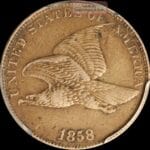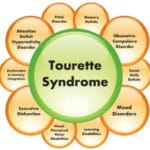This guide helps you uncover the potential value of your Sacagawea dollar coins. Most are worth face value, but some rare varieties can be quite valuable. Let’s explore how to identify these treasures.
Identifying Valuable Sacagawea Dollars
Not all Sacagawea dollars are created equal. Like any collectible, rarity and condition drive value. Here’s what to look for:
Key Dates and Mint Marks
The Coveted 2000-P: Sacagawea dollars minted in 2000, particularly those from the Philadelphia mint (denoted by a “P” mint mark), are generally more desirable to collectors. This is primarily due to the lower mintage compared to later years, much like a first edition of a book. The 2000-P is particularly important due to several unique varieties, some of which are exceptionally rare. To learn more about Sacagawea dollars and their history, check out our in-depth article.
Mint Mark Mystery: While Philadelphia mint coins typically don’t have a visible mint mark, certain 2000 Sacagawea dollars were accidentally released without one. These “no mint mark” 2000 dollars are considered a variety and can be worth slightly more than standard 2000-P dollars.
Errors: Happy Accidents
Errors during the minting process can create highly valuable coins. These imperfections, like misprints in a rare book, make these coins unique and highly sought after. Keep an eye out for:
- Doubled Dies: Look for a doubling or blurring of the design elements, suggesting a problem with the minting die.
- Off-Center Strikes: If the design isn’t fully stamped on the coin, it’s an off-center strike. The further off-center, the more valuable it likely is.
- Wrong Planchet Errors: One of the rarest errors. This occurs when the Sacagawea design is stamped on a planchet intended for a different coin, such as a state quarter or a presidential dollar. These are known as “mule” errors and can be exceptionally valuable. Known examples include a 2000-P Sacagawea dollar struck on a statehood quarter planchet, a 2014-D on a presidential dollar planchet, and a 2000-D on a South Carolina quarter planchet.
Varieties: Special Editions
Beyond errors, specific varieties of Sacagawea dollars are more collectible. For example:
- The 2000-P Cheerios Dollar: This coin was included in boxes of Cheerios cereal in 2000. Due to this unique distribution, fewer entered circulation, increasing its collectibility and value.
- The Elusive 2000 “Shiny Finish” Dollars: Only 5,000 of these were produced and presented to the coin’s designer, Glenna Goodacre. These are considered extremely rare and are estimated to be worth hundreds of dollars each.
- The Enhanced Reverse Proof: Not an error, but a special finish that creates a distinctive frosted design on a mirror-like background. These are highly sought-after by collectors.
Condition: Pristine vs. Worn
A coin’s condition significantly impacts its value. An uncirculated Sacagawea dollar, preserved in mint-state condition, will be worth significantly more than a circulated coin showing wear. Collectors use grading scales (like those used by PCGS and NGC) to assess condition, ranging from “Good” to “Mint State 70.” Uncirculated 2000-D dollars in MS+ condition, for example, can be worth $11 or more.
Evaluating Your Sacagawea Dollar
Think you might have something special? Follow these steps:
The Initial Examination: Carefully check the date, mint mark (if present), and the coin’s overall condition. Use a magnifying glass to detect subtle details.
Research and Compare: Online resources, coin price guides, and forums dedicated to coin collecting can provide valuable information. Compare your coin to similar examples that have recently sold.
Professional Grading (If Necessary): If you suspect your coin is valuable—perhaps a rare variety, an error coin, or in exceptional condition—consider professional grading from a reputable service like PCGS (Professional Coin Grading Service) or NGC (Numismatic Guaranty Corporation). This adds authentication and an official grade, potentially boosting its value significantly.
Expert Consultation: For additional guidance, consult a numismatic expert or a reputable coin dealer. They can provide personalized advice and accurately assess your coin’s worth.
Selling Your Valuable Finds
If you have a Sacagawea dollar of significant value, you can explore several selling options:
Reputable Coin Dealers: Local coin shops or national dealers specializing in U.S. coins can offer appraisals and purchase opportunities.
Online Auction Platforms: Sites like eBay provide a broad marketplace to connect with potential buyers. Be sure to accurately describe and photograph your coin.
Coin Shows and Conventions: Attending coin shows allows you to meet dealers and collectors, potentially finding the right buyer for your special coin.
The Thrill of the Hunt
While discovering a truly valuable Sacagawea dollar is relatively uncommon, the joy of the hunt and the potential for finding a hidden treasure make it an exciting pursuit. Even common Sacagawea dollars offer a connection to history and the artistry of coin making. So, the next time you encounter a Sacagawea dollar, take a closer look—you never know what you might discover! To learn more about the value of Sacagawea dollars and Schwinn bicycle serial numbers, read more in our linked articles!
- SYBAU See You Baby Meaning: Gen Z Slang Evolves - July 1, 2025
- Unlock Your Inner Youth: Lifestyle Secrets for a Vibrant Life - July 1, 2025
- Decode SYBAU Meaning: Gen Z Slang Explained - July 1, 2025






